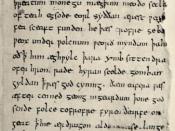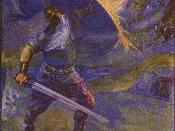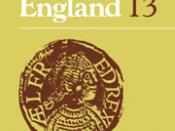Beowulf has a unique and peculiar history. It is often presented as the archetypal literary work and as a cornerstone of Middle Ages literature. The story was composed around 700 A.D. and mostly had been in circulation in oral narrative. The action period of Beowulf story dates back to the 500 A.D. Many of the characters in the poem--the Swedish and Danish royal family members, for example--correspond to actual historical figures. Originally pagan warriors, the Anglo-Saxon and Scandinavian invaders experienced a large-scale conversion to Christianity at the end of the sixth century. Though still an old pagan story, Beowulf thus came to be told by a Christian poet. The Beowulf poet is often at pains to attribute Christian thoughts and motives to his characters, which frequently behave in un-Christian ways. The Beowulf that we read today is therefore probably quite unlike the Beowulf with which the first Anglo- Saxon audiences were familiar.
The events that the story shows and the heroic honor code that is the essence of the whole story date back to pre-Anglo-Saxon culture. I think it is more of secular allegory rather than Christian allegory depicting pagan culture, values and traditions. The story line is developing in Scandinavia before the migration. The tribes that are scattered all around the territory of modern Europe rally around strong kings, who protect their people against other tribes. Kings demand bravery and trustworthiness from their people and repay them with war trophies. After the battle or just to celebrate something, people gathered in the mead-halls such as Heorot in Beowulf. In Heorot, warrior would celebrate the victory, boast, tell stories and receive gifts. Although these mead-halls offered sanctuary, they were not a safe place to stay in and often were attacked by somebody. The fear of the constant invasion...



Forgettin important information
I think this essays was very well written however you left out something very important to the history of Beowolf. This poem was entirely written in Iambic Pentameter which is an old form of writing that is based on syllable counts in each line.
1 out of 1 people found this comment useful.